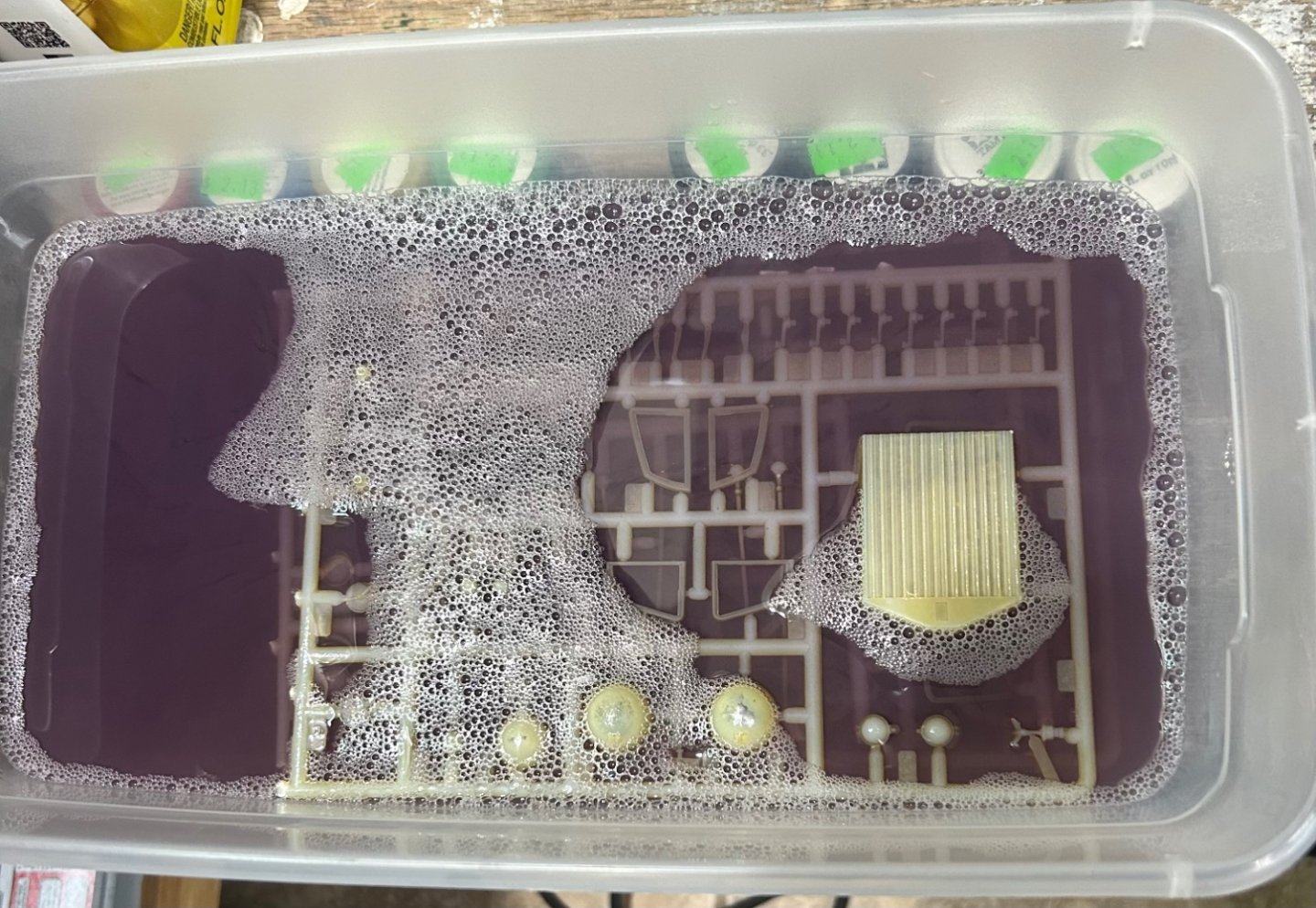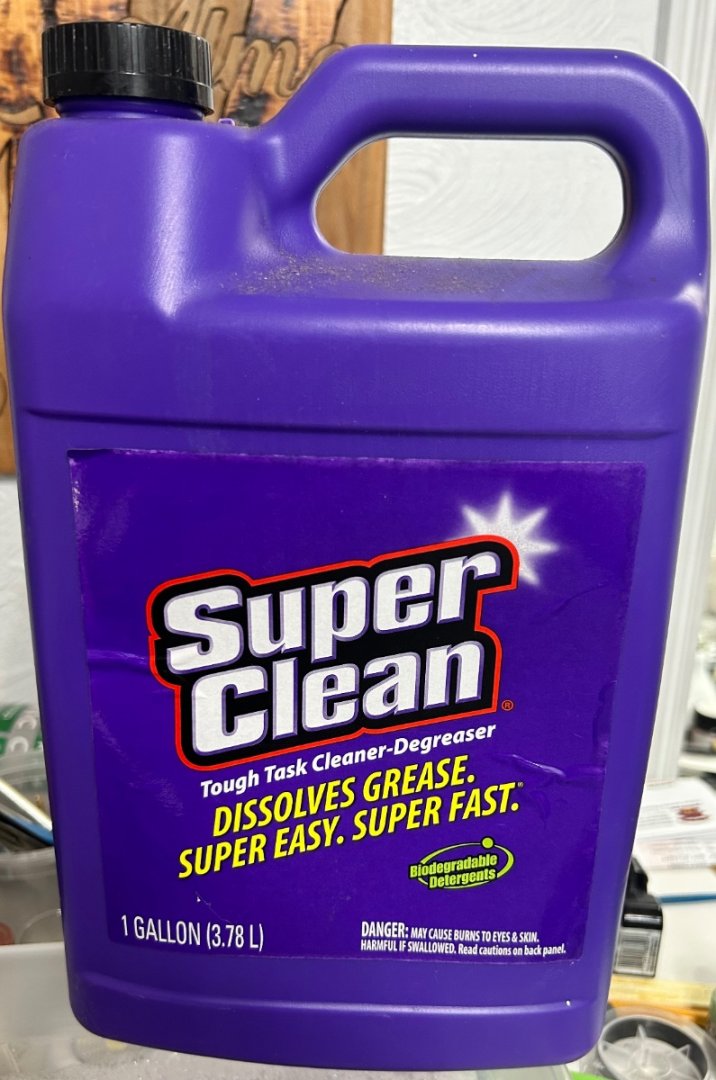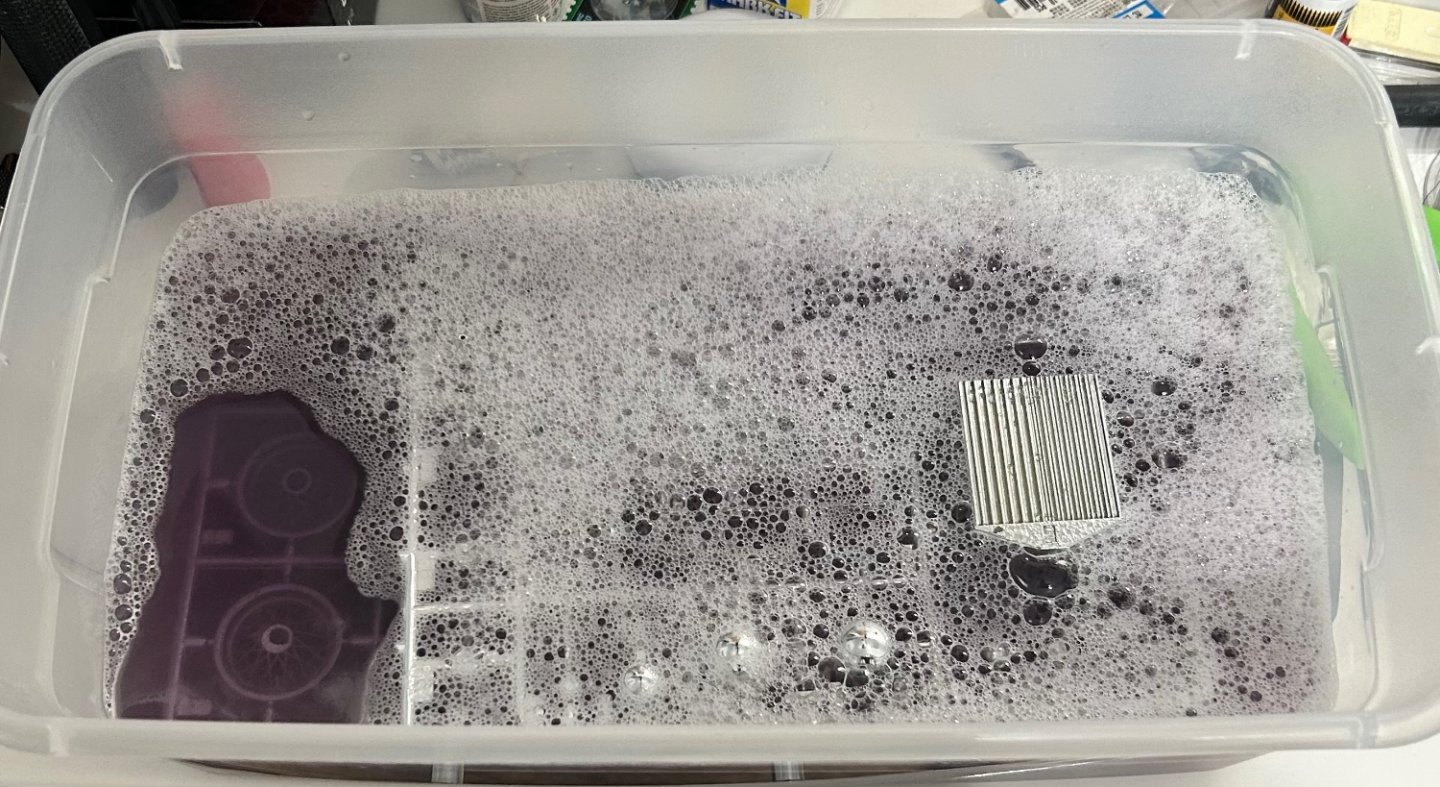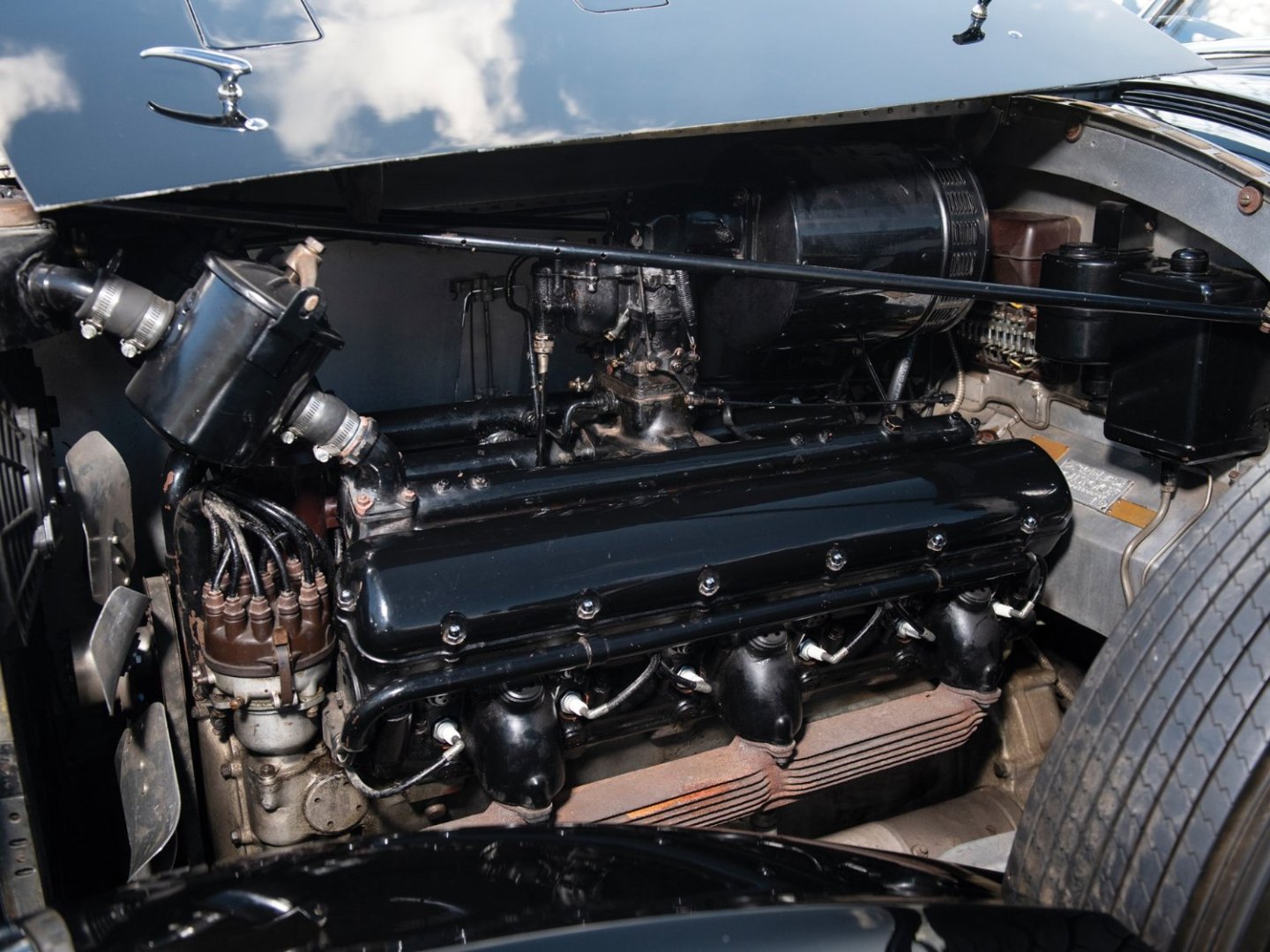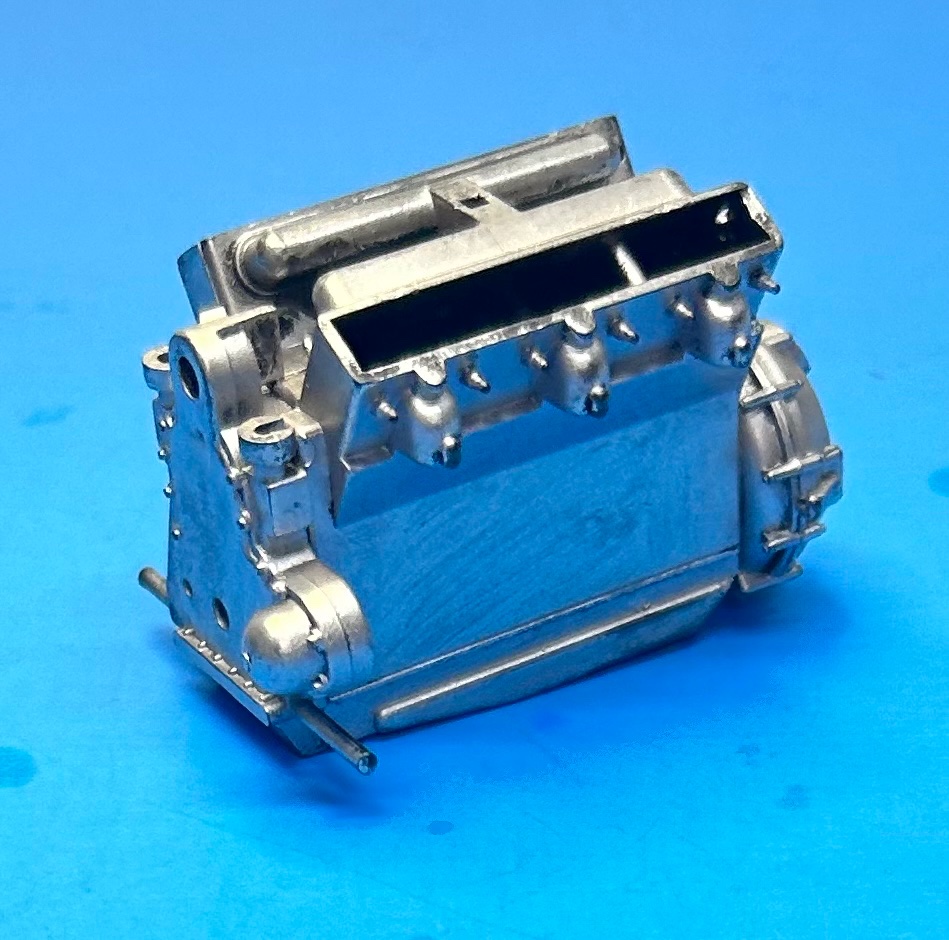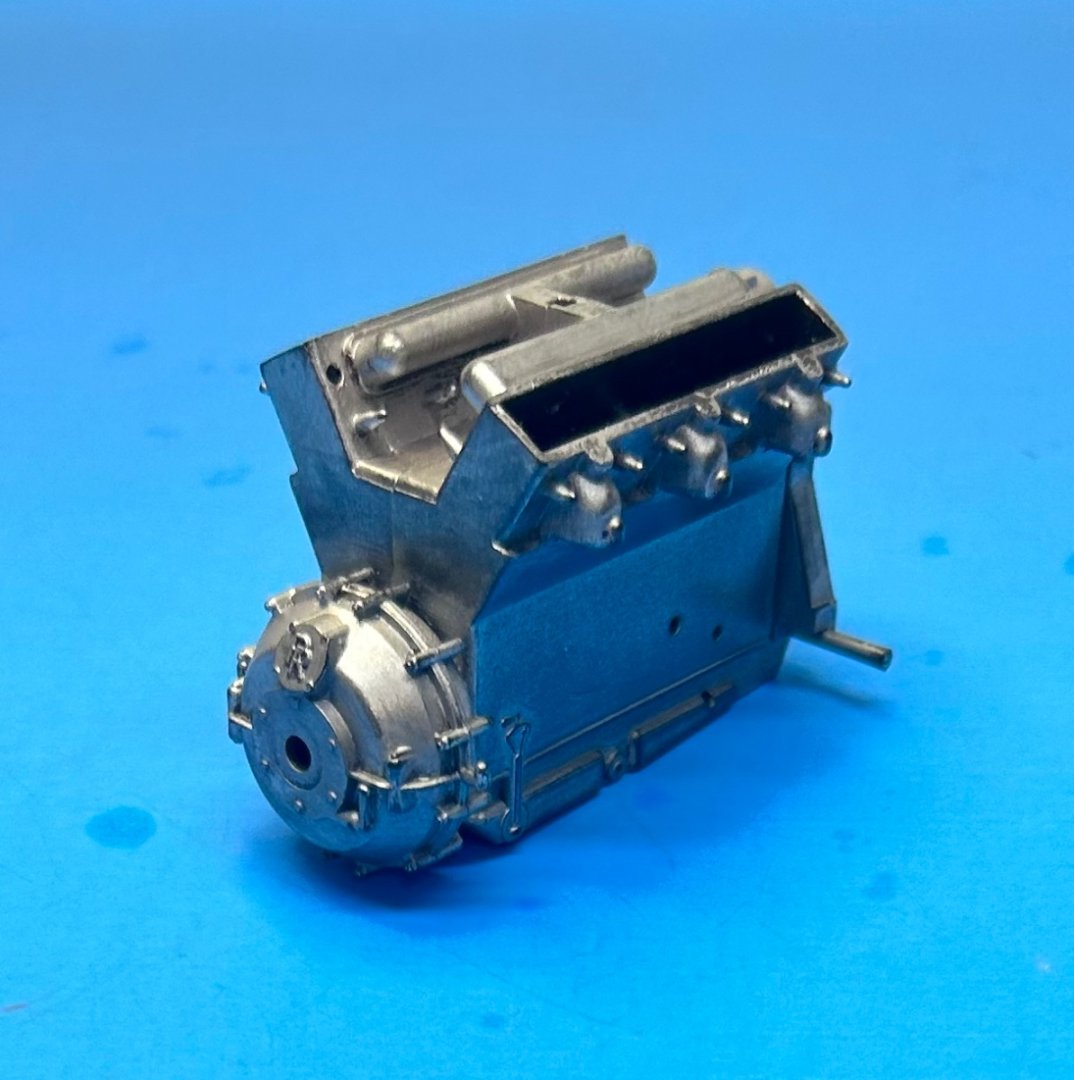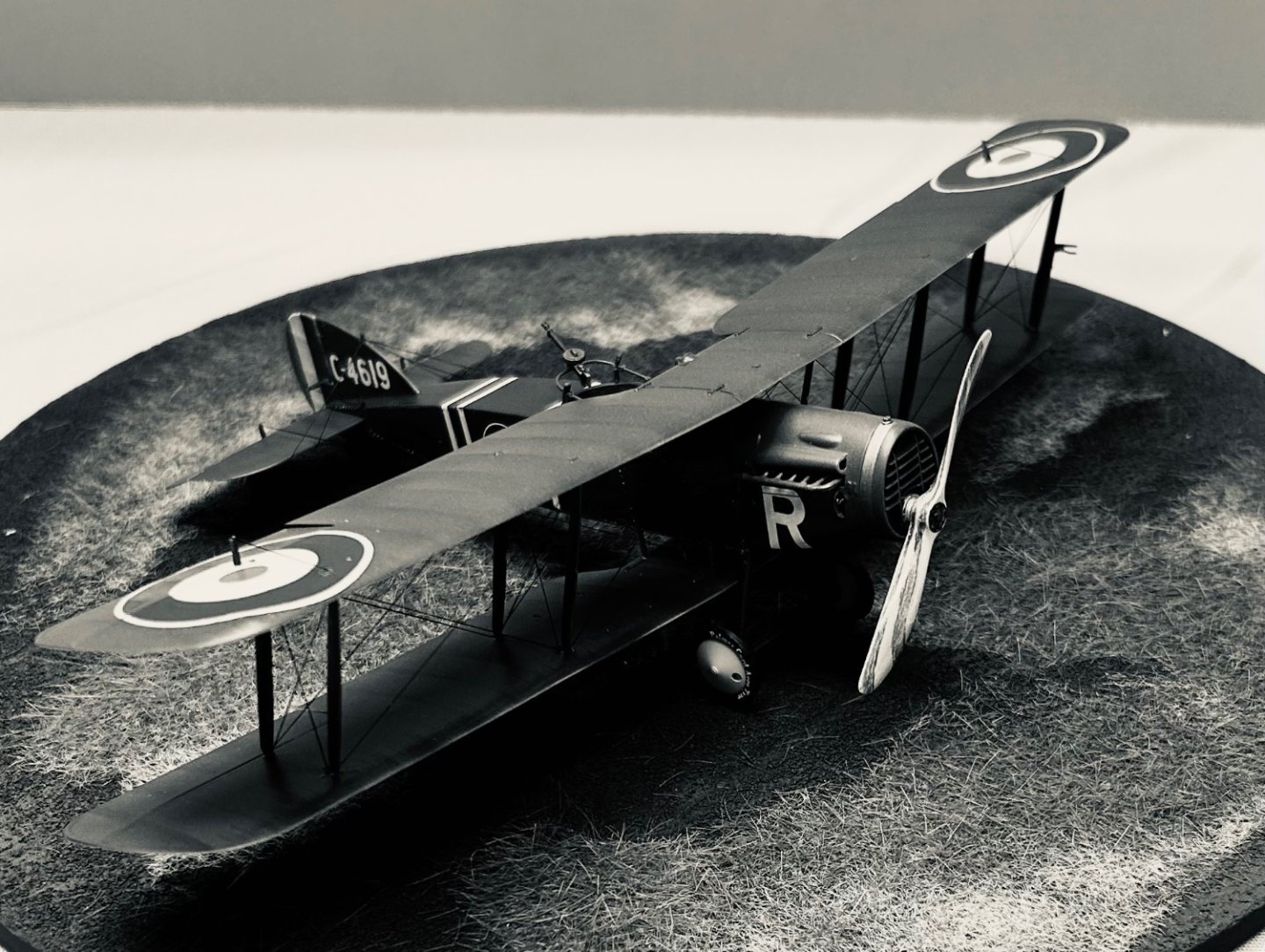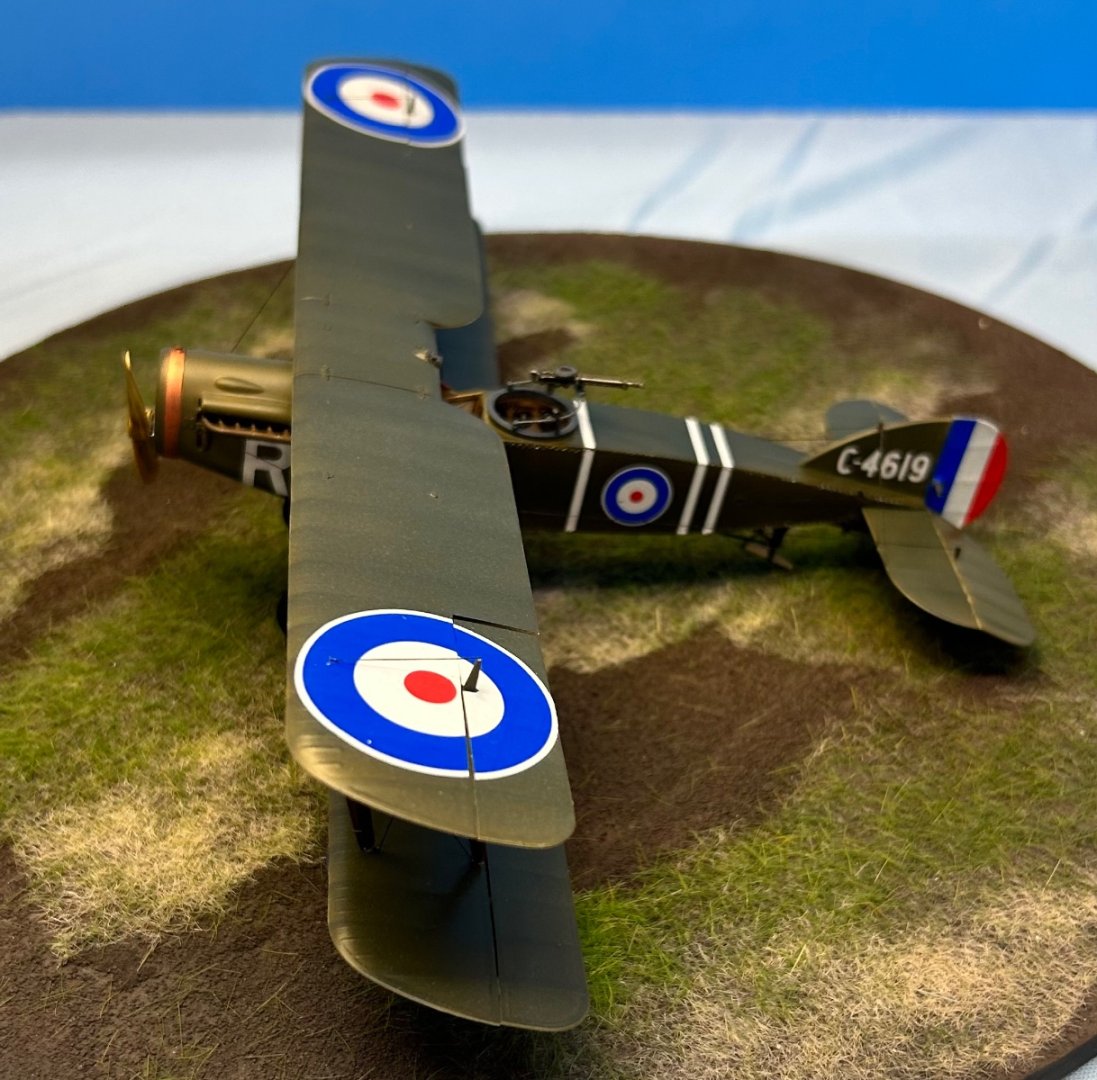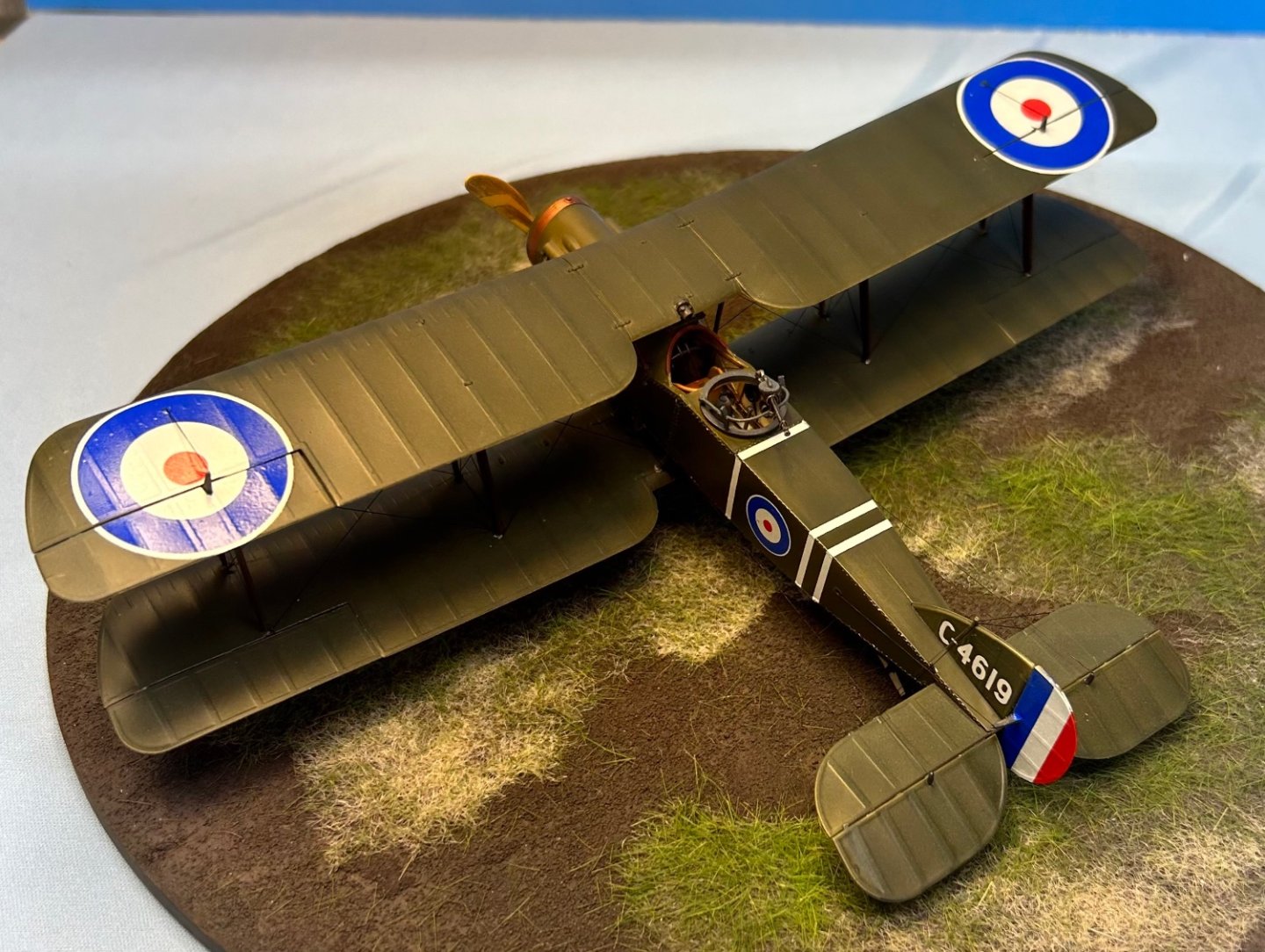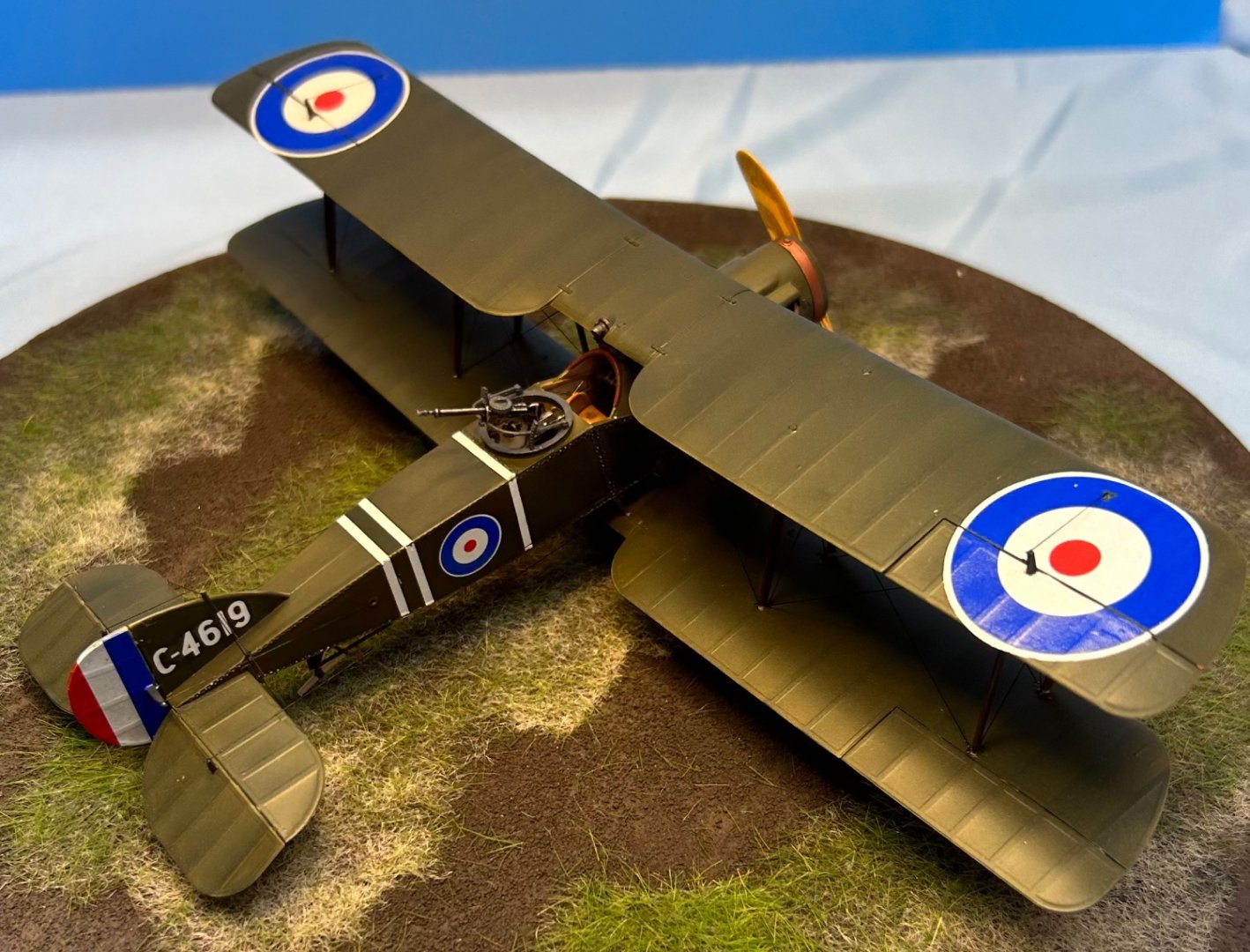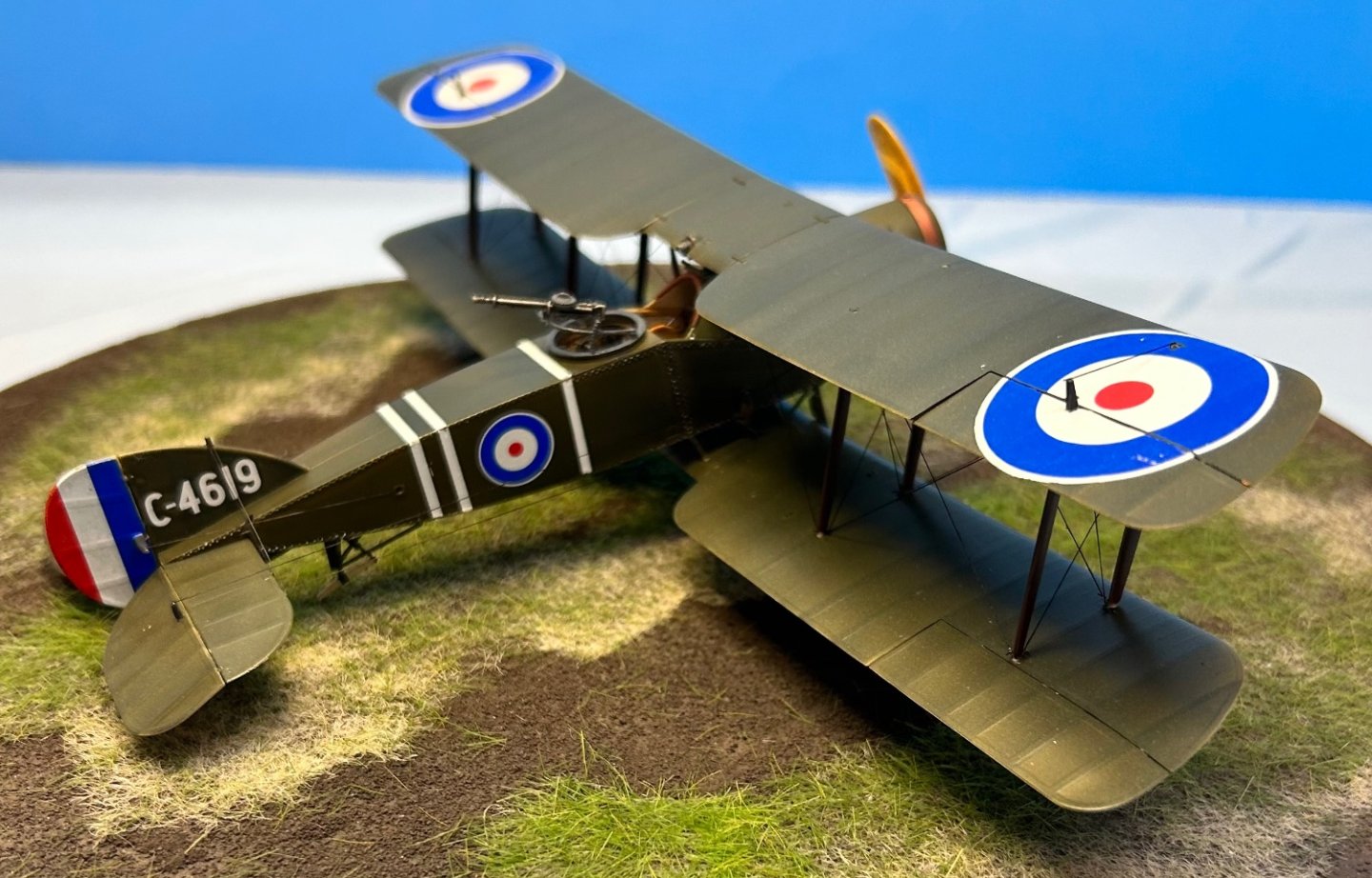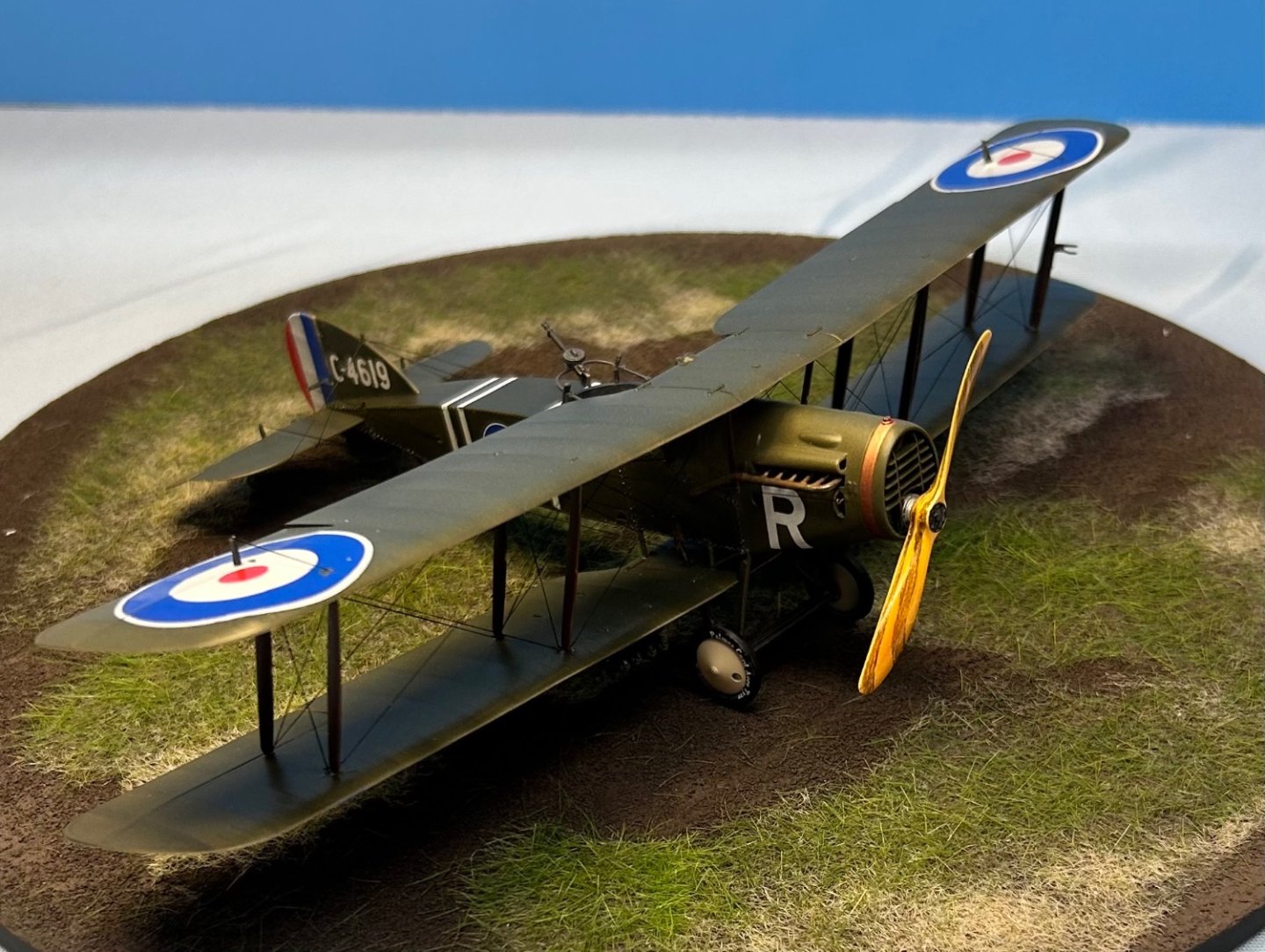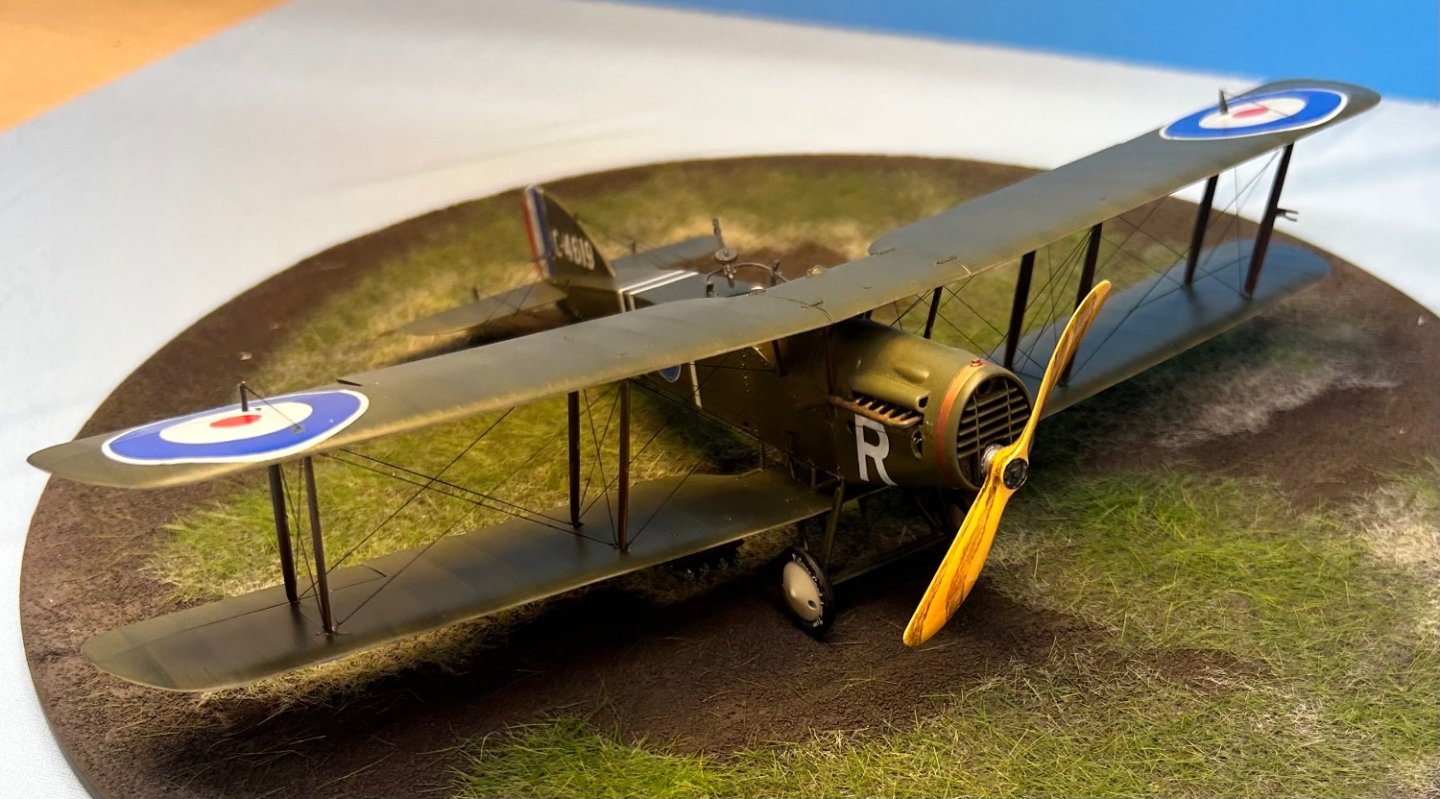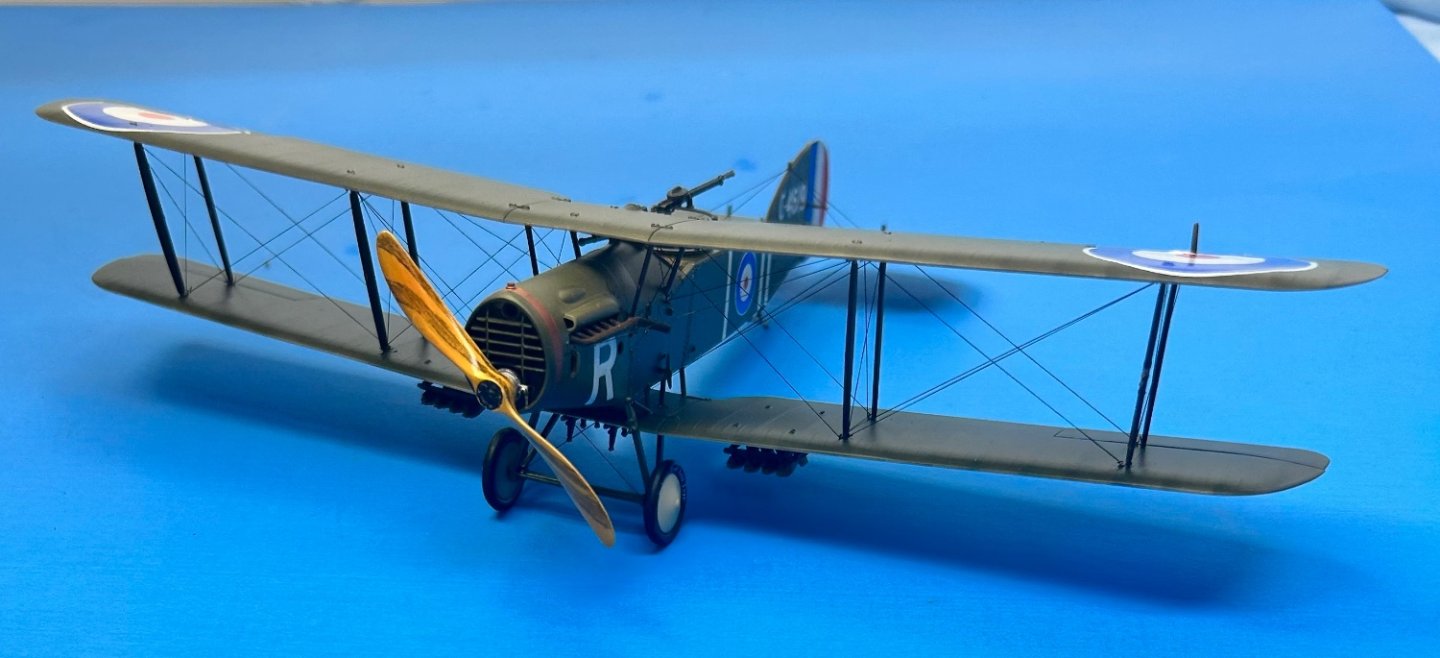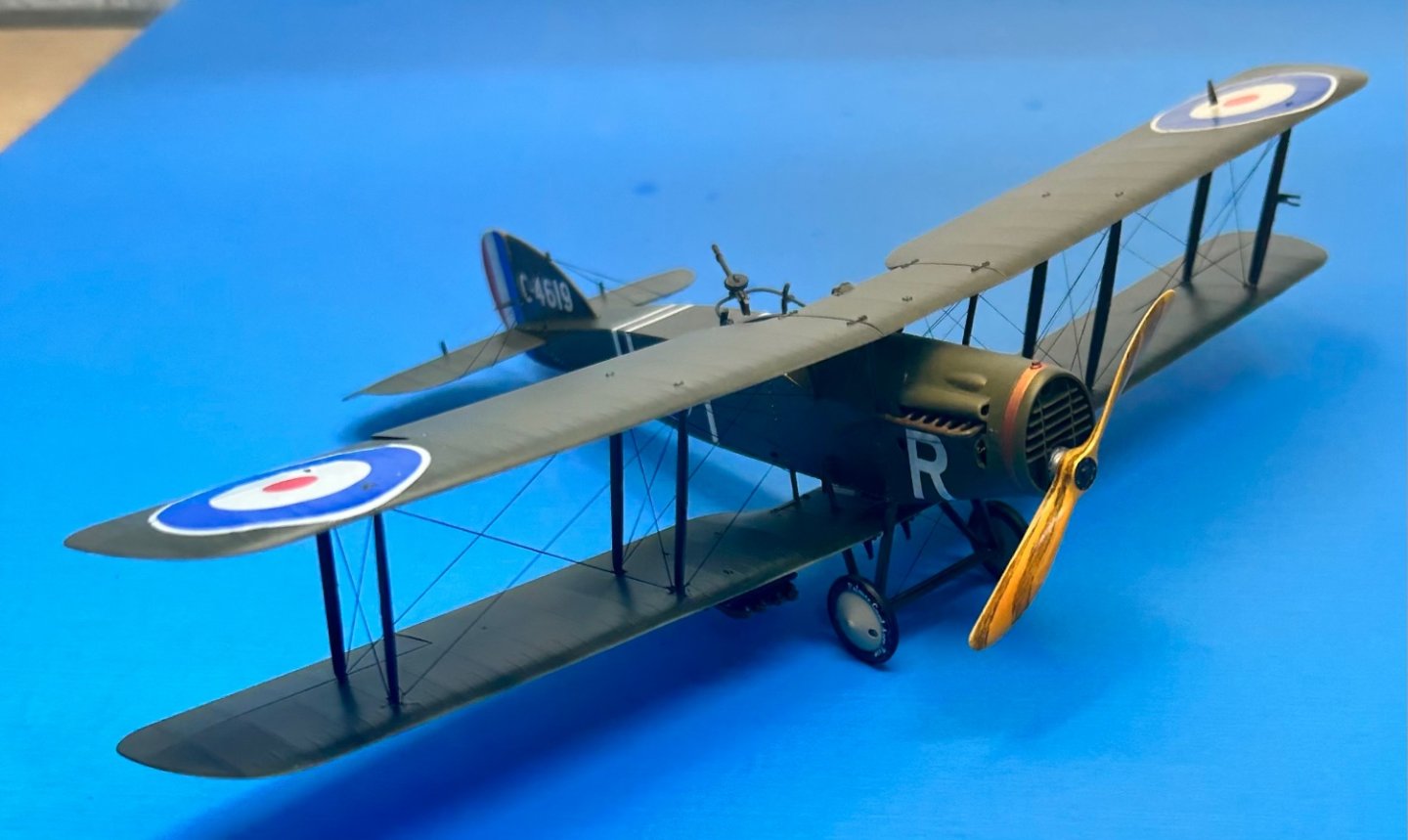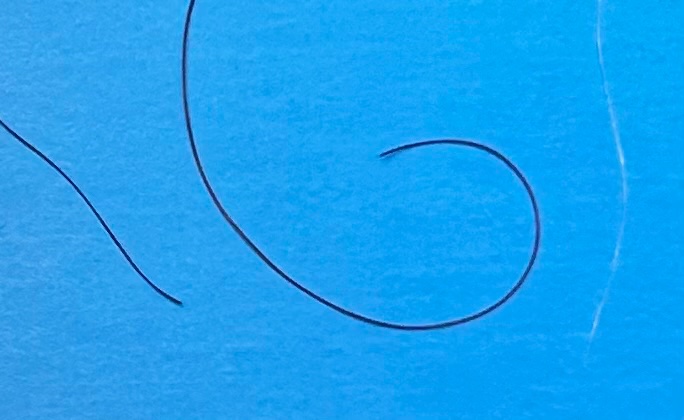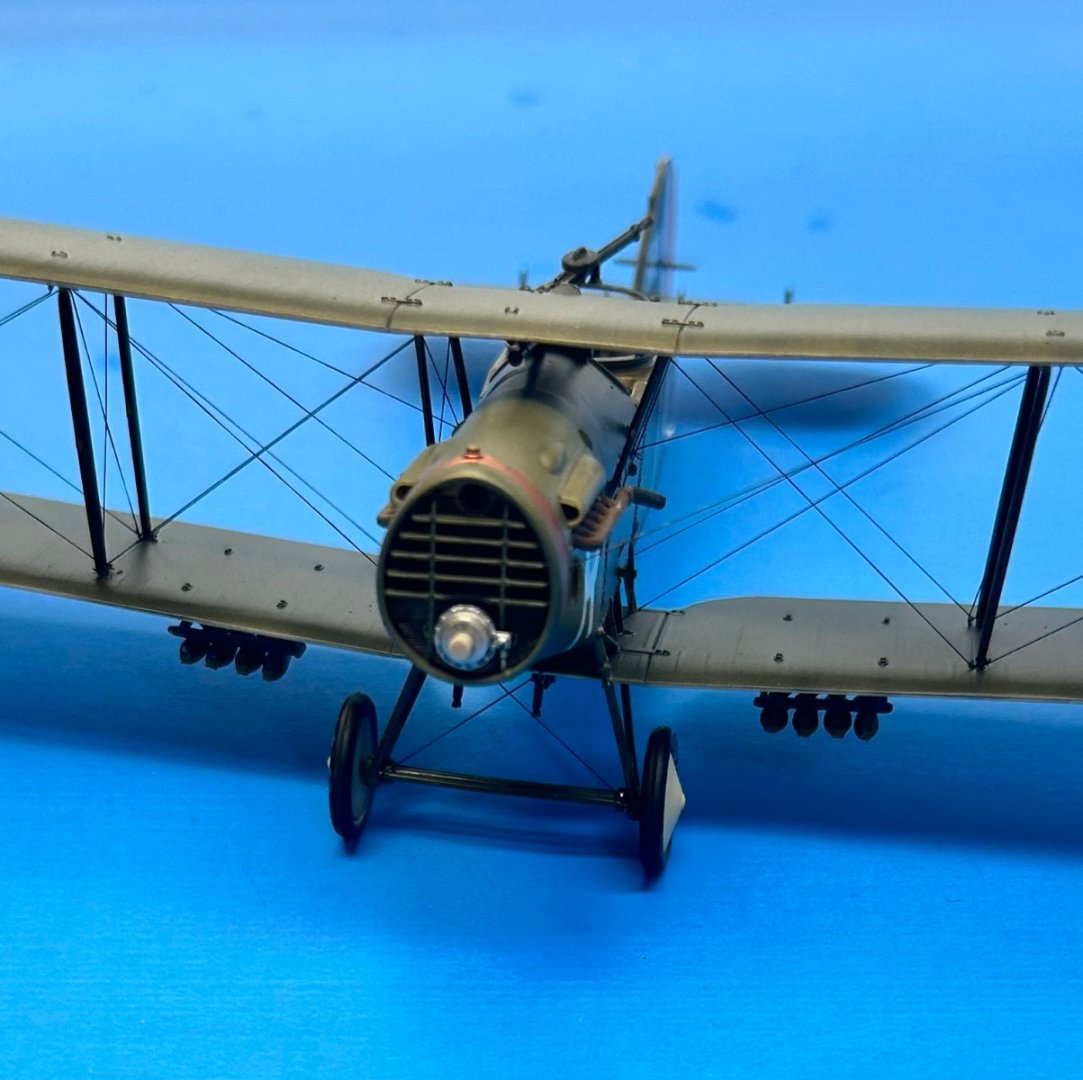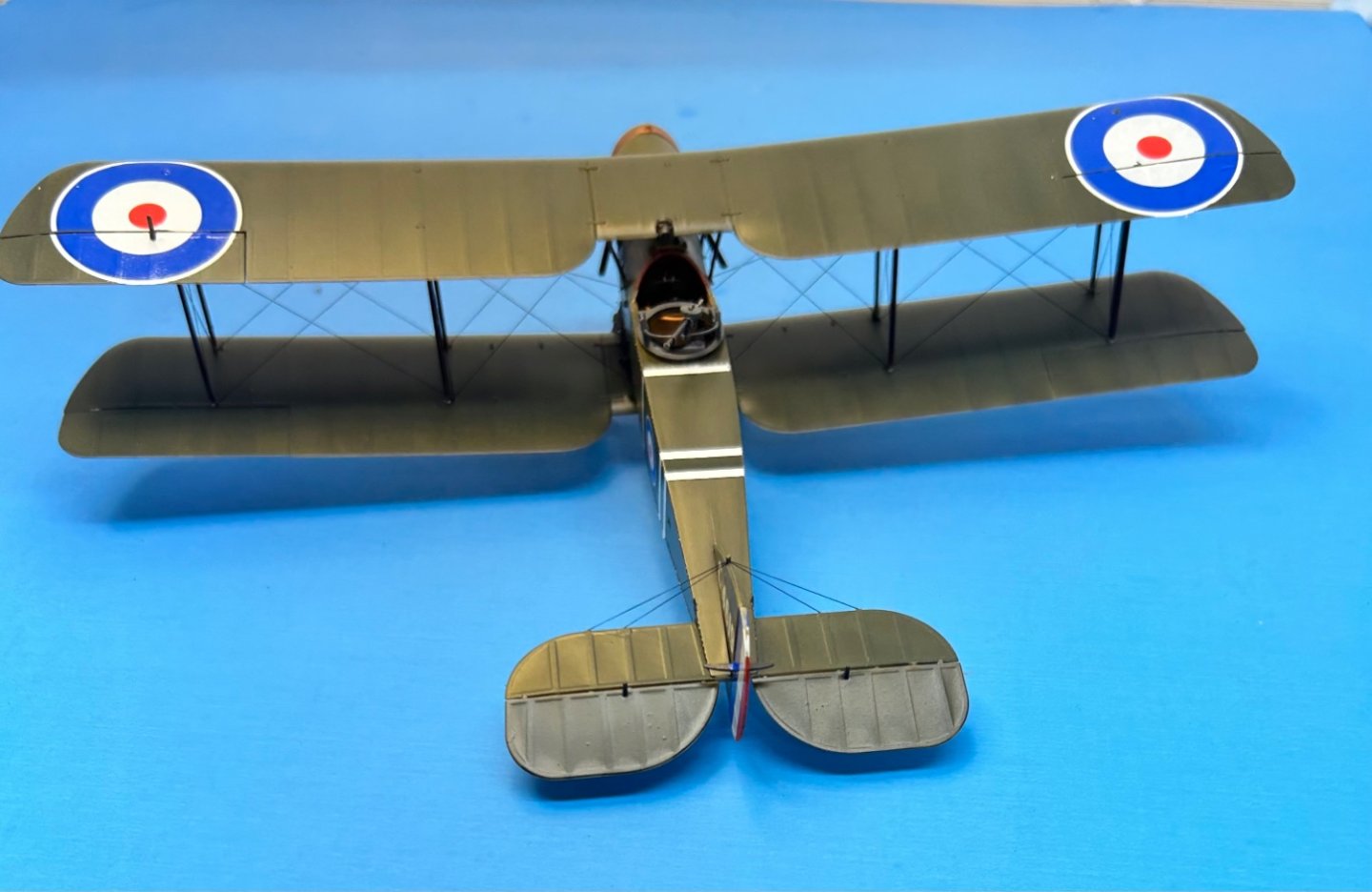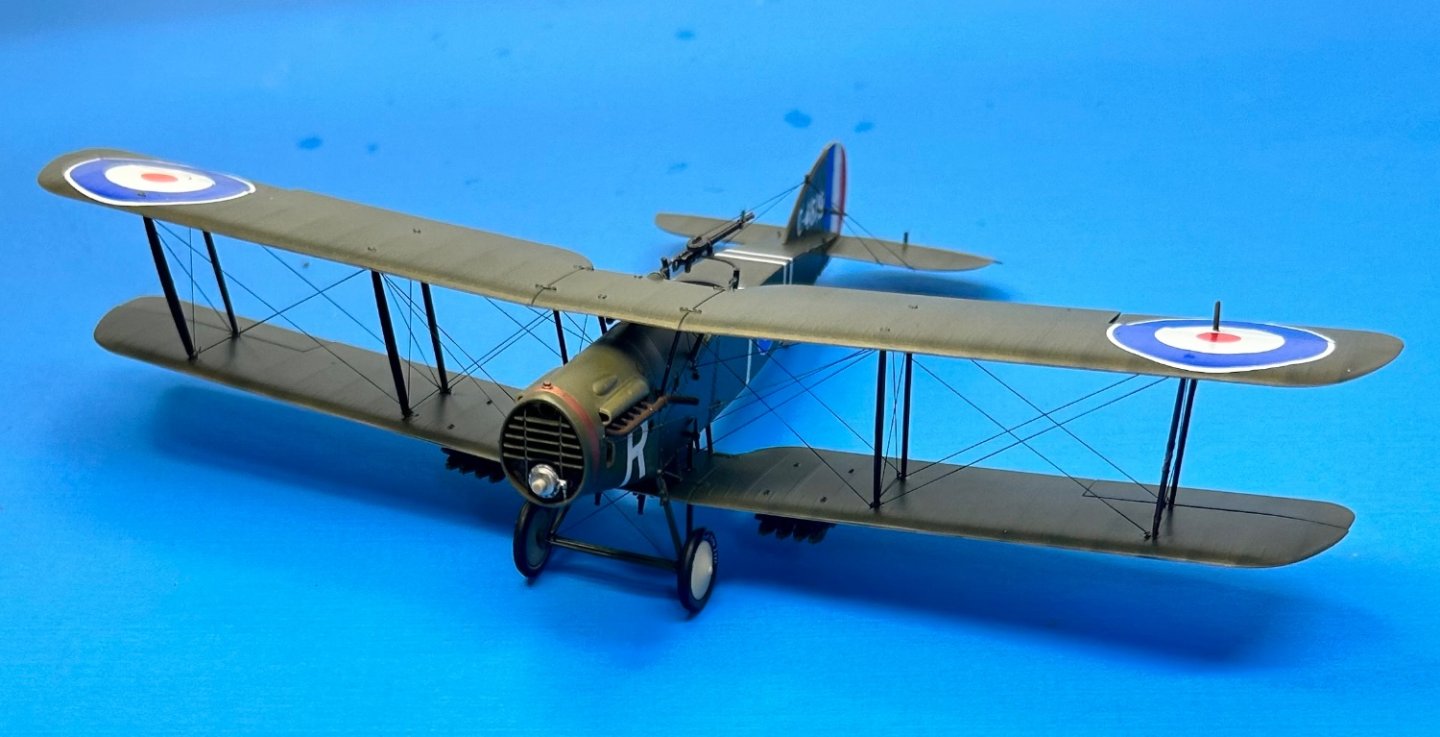-
Posts
7,737 -
Joined
-
Last visited
Content Type
Profiles
Forums
Gallery
Events
Everything posted by CDW
-

1936 Rolls Royce Phantom III by CDW - Revell - 1:16 scale
CDW replied to CDW's topic in Non-ship/categorised builds
The yellowish tint on the parts tree is the clear paint under the chrome that has not been removed yet. In another hour or so, I will scrub the parts a bit with a toothbrush and rinse them off. They will be bare plastic then. -

1936 Rolls Royce Phantom III by CDW - Revell - 1:16 scale
CDW replied to CDW's topic in Non-ship/categorised builds
I didn't care for the AK True Metal paste I used on the engine block, so I decided to strip it off and go another route. I'll take this opportunity to show what I use to strip paint and the "chrome" off of molded plastic parts. It's a product many in the plastic modeling community are familiar with, called Super Clean. It come in gallon size plastic jugs, and I buy mine from the automotive section of Wal Mart. Seels for around $10 a gallon last time I bought some. It will last a long, long time, and can be used over and over again, just pour it back into the jug after use. It stripped the wax off the engine block in just seconds, using a stiff brush to loosen the paste from cracks and crevices. Took it all the way down to my primer, which was Mr Color lacquer. Had I left it in the solution for an hour or so, it would have stripped the primer as well, down to bare plastic. If you use it to strip a model that's been painted a long time, like years, it may need overnight and a toothbrush the next day to loosen and remove the paint. it will not harm clear plastic such as canopies and windows, so that's a plus. Next, I am using it to strip my chrome parts tree. What I really like about it, it also removes the clear paint that's underneath the chrome. The clear paint is part of the plastic plating process. Other methods such as brake fluid or bleach will also remove the chrome plating, but it won't remove the clear paint under the plating. Not to mention the fact that brake fluid is just a p-i-t-a to get rid of when you're done with it, AND it fogs/ruins clear plastic. I know, I know, I also used it back in the day but that was all we had back then except for spray-on oven cleaner, and that has all its own set of drawbacks. Stripping the chrome tree down to bare plastic usually takes a couple of hours, and sometimes a toothbrush to scrub the parts a bit to remove stubborn clear paint. Just a word or two of caution: make sure to wear latex gloves and keep the Super Clean off your bare skin. Do not put your uncovered hands down into it. Keep it off/away from anything you don't want damaged in case you accidentally spill it. Lastly, use a container with a lid if you are using the product indoors. -

Sea Harrier FRS1 by AJohnson - FINISHED - Airfix - 1:72
CDW replied to AJohnson's topic in Non-ship/categorised builds
It pains me but it seems the "new normal" for newly released 1:48 modern fighter planes are right around the $100 mark. Sometimes more, sometimes a little less. Unless there is a drastic change of some sort, I don't expect this upward cost trend to get any better. Makes me wonder if we all might one day be building card models just so we can afford the model building hobby. I have recently paid as much as $150 for a newly released SU-27 kit. For me, this trend is unsustainable. -

Sea Harrier FRS1 by AJohnson - FINISHED - Airfix - 1:72
CDW replied to AJohnson's topic in Non-ship/categorised builds
Beautiful build on your Buc! My old air force buddy tells me a tale about him flying at Red Flag in his F-16 while he watched a Buccaneer race past almost on the deck supersonic. They were by all accounts a very impressive aircraft. Mine was also done in Desert Storm markings, although I gave it away long ago and have no photos of it to share. Wish I did, but in those days I did not have a digital camera and developing film was such a hassle I neglected to take photos of many many models I wish I had photos of now. -

1936 Rolls Royce Phantom III by CDW - Revell - 1:16 scale
CDW replied to CDW's topic in Non-ship/categorised builds
The comparison is closer to Protar, although it’s my opinion the Gunze kits are a bit better molded while Protar gives multi media parts in their kits, Gunze does not. Gunze Kia are typical of Japanese models from the 70’s. Back then they were considered high quality. Poacher is in a league all their own, twice the size and orders of magnitude more parts. -

1936 Rolls Royce Phantom III by CDW - Revell - 1:16 scale
CDW replied to CDW's topic in Non-ship/categorised builds
-

1936 Rolls Royce Phantom III by CDW - Revell - 1:16 scale
CDW replied to CDW's topic in Non-ship/categorised builds
Couple of years ago, bought some tubes of AK True Metal wax paste in various metallic shades. I never got around to using it so decided to try some out on the Rolls V-12 engine block. Photos I’ve seen of the engine appear to be unpainted metal, so I first covered the engine block in a black primer then applied some AK true metal iron color then polished it a bit. Maybe it’s just me, but I thought it looked too silver. Next I applied some gun metal color and buffed it. It’s a shade or two darker. I think I like the gun metal for this piece. It’s going to get shaded and dirtied up a bit later so this will just serve as a base color for the block. -

Sea Harrier FRS1 by AJohnson - FINISHED - Airfix - 1:72
CDW replied to AJohnson's topic in Non-ship/categorised builds
Have any of you in the UK had a look at the newly released 1:48 Airfix Buccaneer yet? Their old one was challenging and I want to see the new one. Several of us did a group build challenge on the old one in the 90’s. It was a lot of fun. -

Sea Harrier FRS1 by AJohnson - FINISHED - Airfix - 1:72
CDW replied to AJohnson's topic in Non-ship/categorised builds
The photo etch set made a vast improvement on your Harrier. Looks great. I admire your persistence. Going to make a very nice little model when you’re done with it. -

1936 Rolls Royce Phantom III by CDW - Revell - 1:16 scale
CDW replied to CDW's topic in Non-ship/categorised builds
Probably one of the first things I'll do with this model is to strip most all the chrome plated parts. Need to start thinking about a jig to make my own spoked wheels, too. -

1936 Rolls Royce Phantom III by CDW - Revell - 1:16 scale
CDW replied to CDW's topic in Non-ship/categorised builds
Dang, I just started an old model that's been sitting around here for over 30 years and now learn it was worth almost half of that I needed to buy the 1:32 Border Models Lancaster (Wingnut Wings design). Sheesh...what have I done? Oh well, maybe I can sell it built. Done that many times before. -

1936 Rolls Royce Phantom III by CDW - Revell - 1:16 scale
CDW replied to CDW's topic in Non-ship/categorised builds
About 30, maybe 35 years old now. They reboxed a Japanese kit for this...Aoshima I think. Edit: I just checked: it was from Gunze originally. -

1936 Rolls Royce Phantom III by CDW - Revell - 1:16 scale
CDW replied to CDW's topic in Non-ship/categorised builds
About 30, maybe 35 years old now. -

Bristol F.2B WW1 Fighter by CDW - FINISHED - Eduard - 1:48 Scale
CDW replied to CDW's topic in Non-ship/categorised builds
Yes, to mute the national markings primarily. I never tried it before, but this is a photo edit I found: -

Bristol F.2B WW1 Fighter by CDW - FINISHED - Eduard - 1:48 Scale
CDW replied to CDW's topic in Non-ship/categorised builds
I will put a dull coat over all to unify the model, but this model for me is finished. Its been fun, a nice kit for a small amount of money. Thanks for following along, your likes and kind comments. See you again soon with another model. -

Bristol F.2B WW1 Fighter by CDW - FINISHED - Eduard - 1:48 Scale
CDW replied to CDW's topic in Non-ship/categorised builds
-

Bristol F.2B WW1 Fighter by CDW - FINISHED - Eduard - 1:48 Scale
CDW replied to CDW's topic in Non-ship/categorised builds
Was in my early 50's when diagnosed with cataracts and consequently had surgery on both eyes just afterward. Mine came on due to spending a number of years on limerock surfaces in the bright Florida sun. It was common among men in the field of work I was in, road construction. I thought I needed brighter light bulbs to see better, so I kept increasing the wattage until I was working on my models using a 250 watt bulb. My wife said, you need to see an eye doctor. I did, and the rest was history. The good news, it was immediate relief after the surgery. I literally came out of surgery with 20-20 vision. I had mine done at St Lukes clinic where a Doctor Gills was known worldwide for his cataract surgery, people coming from all over the country, and even from foreign countries to get their eye surgery there. Don't know if it's the same today, but I was given the choice of distance vision or closeup vision without corrective lenses. I chose distance vision so I would not need glasses to drive, just reading glasses. Alternatively, I could have chosen one eye with distance vision and the other with closeup vision but I didn't like the sound of that. Dr Gills said you get accustomed to it, but I stuck with the uncorrected long-distance vision for both eyes. Glad I did that. No problems since then, and that's been more than 16 years ago. -

On Hold - Nakajima Type KO 3 by CDW - Answer - 1:33 Scale - CARD
CDW replied to CDW's topic in Non-ship/categorised builds
I have been watching a ton of YT videos about paper model building. Very helpful and informative, I think. One of the modelers uses scissors to cut out most of his parts. His models seem to turn out well. Will scissors leave a raised edge, and are there other disadvantages to using scissors instead of a blade to cut out the parts? I have also noticed that several modelers use a spoon to flatten down edges that have been blade-cut. -

Bristol F.2B WW1 Fighter by CDW - FINISHED - Eduard - 1:48 Scale
CDW replied to CDW's topic in Non-ship/categorised builds
What you see on my F.2B is the medium Infini rigging. I would use the Infini fine size rigging on my 1:700 scale ships. I think the medium scales out to be around 1.2 inches at 1:250 scale. Failed to answer earlier, but the thread adheres well to any surface I have tried, plastics, wood, and metal, using thin CA. It would be a real pain to use a slower setting glue in my opinion as you would need to hold it too long in a stretched position until it set. But I have heard of those who use acrylic glue. Probably would work okay with as little stretch except as absolutely necessary to remove sags. -

Bristol F.2B WW1 Fighter by CDW - FINISHED - Eduard - 1:48 Scale
CDW replied to CDW's topic in Non-ship/categorised builds
Pictured from left to right are rolls of Infini "medium" size rigging, EZ Line "fine" rigging, and Infini "fine" rigging. The first thing to take note of the terms medium and fine are only consistent between like brands. Both the Infini medium and Infini fine are both smaller diameter than the EZ Line fine. The Infini fine is very very fine indeed. Almost invisible. I can't really see a lot of difference in cross section. I magnified the photo as much as possible to let you be the judge of that. All the lycra thread I have worked with seems somewhat inconsistent in cross section. It looks flat, it looks round, it looks something in between, but once it's stretched it all looks alike to me with my mk.20-20 eyeballs. The Infini packages give the actual diameter measurement. EZ Line does not but it's obviously the thickest of the three. -

Bristol F.2B WW1 Fighter by CDW - FINISHED - Eduard - 1:48 Scale
CDW replied to CDW's topic in Non-ship/categorised builds
Thanks for the nice comments, much appreciated. While I had planned to use a very fine monofilament line and micro tubing for the rigging, I had to switch out to Infini lycra thread. In the past, had successfully used the monofilament and micro tubing for rigging 1:32 scale WW1 aircraft, but found the combination too unwieldy for this 1:48 scale model. Just not enough space to make it work for me. Half that battle is keeping the right focal length between my Optivisor and the model. That’s an issue no matter what medium is being used for rigging. At the right focal length, I find my visor often collides with the model. Several times I almost dropped it because of that. In hindsight I should have made a slightly larger loop for my tie off points. Next time I will do that. I wonder if the Eduard WW1 aircraft kits are reboxed Roden products. Anyone know? In past experience most Eduard kits I have owned were reboxed for their use. The 1:48 Tornado and 1:48 Mi-25 kits come to mind. They are actually Revell and Zvezda kits with Eduard details, instructions, and decals. I ask because I see some interesting 1:48 scale WW1 kits from Roden and may be interested to acquire a few. If the Roden kits were as nice as this Eduard one, I would be pleased. -

Bristol F.2B WW1 Fighter by CDW - FINISHED - Eduard - 1:48 Scale
CDW replied to CDW's topic in Non-ship/categorised builds
Looking at my photos, realized I left out some of the rigging between the fuselage and inner wing struts. Added those today. Also added the rigging on the rudder and horizontal stabilizer. That's about all the rigging I care to do today. Maybe I'll tackle a little more this evening depending on Mo (motivation). -

F4U-1A Corsair by DocRob - FINISHED - Tamiya - 1/32
CDW replied to DocRob's topic in Non-ship/categorised builds
That really is a great OOB wheel well from Tamiya. The Corsair is the one 1:32 Tamiya kit I do not own yet, but your build may tempt me into one of my own. Beautiful progress so far, love your work on it.
About us
Modelshipworld - Advancing Ship Modeling through Research
SSL Secured
Your security is important for us so this Website is SSL-Secured
NRG Mailing Address
Nautical Research Guild
237 South Lincoln Street
Westmont IL, 60559-1917
Model Ship World ® and the MSW logo are Registered Trademarks, and belong to the Nautical Research Guild (United States Patent and Trademark Office: No. 6,929,264 & No. 6,929,274, registered Dec. 20, 2022)
Helpful Links
About the NRG
If you enjoy building ship models that are historically accurate as well as beautiful, then The Nautical Research Guild (NRG) is just right for you.
The Guild is a non-profit educational organization whose mission is to “Advance Ship Modeling Through Research”. We provide support to our members in their efforts to raise the quality of their model ships.
The Nautical Research Guild has published our world-renowned quarterly magazine, The Nautical Research Journal, since 1955. The pages of the Journal are full of articles by accomplished ship modelers who show you how they create those exquisite details on their models, and by maritime historians who show you the correct details to build. The Journal is available in both print and digital editions. Go to the NRG web site (www.thenrg.org) to download a complimentary digital copy of the Journal. The NRG also publishes plan sets, books and compilations of back issues of the Journal and the former Ships in Scale and Model Ship Builder magazines.

.jpg.7e80607770d9078b2f0b470e8c9c33ac.jpg)
